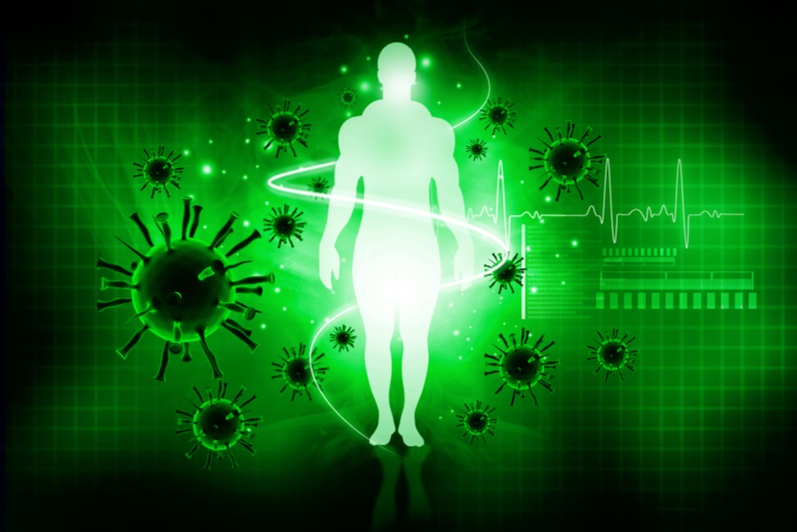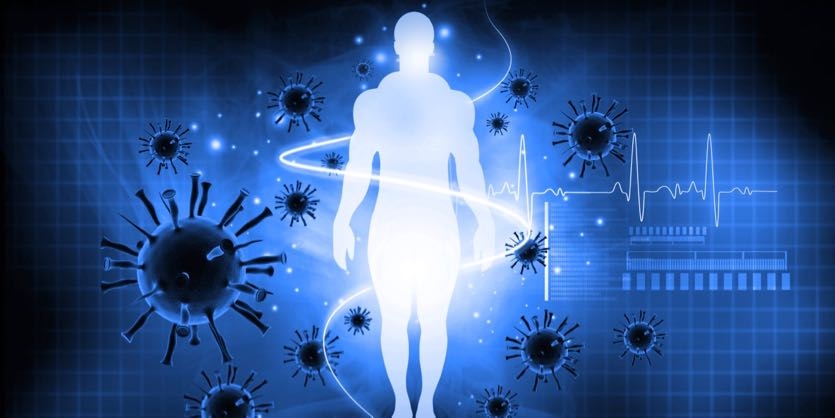Immune System Optimisation – Part 2
Following up on my last article, I want to continue providing you with ways to increase your immune system to keep you protected and healthy during these current times.
Selenium
Selenium is an essential trace mineral that is important for immune system function, inflammation, cognitive performance and fertility in both males and females. Adequate levels of selenium are important for initiating immunity (through its incorporation into selenoproteins), but it’s also involved in regulating excessive immune responses and chronic inflammation(1). Selenoproteins play a crucial role in regulating reactive oxygen species (ROS) and redox status in nearly all tissues(2). Deficiency in selenium has recognized to negatively impact immune cells during activation, differentiation and proliferation(1).
Supplementing with selenium has been proposed to have health benefits for patients suffering from viral diseases, specifically HIV and influenza A infections(3). It’s also been shown to improve several clinical and lifestyle variables in patients with these infections. It affects the functions of both adaptive and innate immunity, promotes proliferation and favors differentiation of naive CD4-positive T lymphocytes toward T helper 1 cells, which supports acute cellular immune response(3).
Studies have shown that in Hubei Province where COVID-19 is said to of originated, that this is one of the most selenium deficient areas in all of China(4). Due to this selenium deficiency, many of the population were affected dramatically due to not having the antiviral properties that selenium supports. Investigations hypothesize that selenium status was associated with COVID-19 disease outcome(4).
Therapeutic doses of selenium are 200mcg-300mcg per day, which can be taken in the form of capsule or drops. Foods that contain selenium include Bazil nuts, walnuts, grains, beef, poultry and fish such as tuna, cod and red snapper.
Andrographis
Andrographis paniculata, generally known as “king of bitters” is a herb that is part of the Acanthaceae family which is predominantly found in China, Thailand and Malaysia(6).
Andrographolide (a major bioactive chemical constituent) known for its anti-inflammatory effects, is isolated from various parts of the Andrographis herb(6). This compound has been tested for its effects in conditions such as arthritis, asthma, stroke, hepatic and neural toxicity, carcinoma, ischemia and oxidative stress(5). Apart from this, andrographolide also has immunomodulatory effects by enhancing cytotoxic T cells, natural killer (NK) cells, phagocytosis and antibody-dependent cell-mediated cytotoxicity (ADCC)(5). All these properties form the foundation to restrain virus replication and virus-induced pathogenesis(5).
One study has investigated Andrographis’ antiviral activity against dengue virus (DENV). This virus is the most prevalent arthropod-transmitted viral illness with an estimated 100 million symptomatic infections occurring each year and more than 2.5 billion people living at risk of infection(7). Results showed that andrographolides had significant anti-DENV activity in both HepG2 and HeLa cell lines, which reduced both levels of cellular infection and virus output, demonstrating its potential role as an anti-viral agent(7).
The dosage of andrographolides is 60mg for adults and 30mg for children per day, this is usually consumed with food to avoid any gastrointestinal side effects.
Echinacea
Extracts of the Echinacea species have traditionally been used in North America against colds, influenza and other diseases. Recent studies show that preparations derived from certain species and parts of the plant possess potent antiviral properties working against membrane-containing viruses(8). Avian influenza, herpes simplex virus, respiratory syncytial virus and rhinoviruses were all very sensitive to Echinacea purpurea extracts(8). Some extracts displayed anti-inflammatory activity in virus-infected cells and numerous other effects on the expression of cellular genes(8).
Other experimental studies show that the biological properties of Echinacea purpurea are antioxidant, antibacterial, antiviral and larvicidal activities(9). The pharmacologically active metabolites of the plant such as alkamides, caffeic acid derivatives, polysaccharides and glycoproteins are believed to be responsible for the therapeutic actions(9).
Echinacea purpurea extracts inhibit virus replication if consumed prior to infection(10). The studies that demonstrate this were done using human H1N1-type IV, highly pathogenic avian IV (HPAIV) of the H5- and H7- types, as well as swine origin IV (S-OIV, H1N1). This was achieved by inhibiting the receptor binding activity of the virus, which suggests that extracts interfere with viral entry into cells(10).
Recommended dosing is 300 mg of dry powdered extract (standardized to echinacoside 3.5%), 0.25 to 1.25 mL of liquid extract (1:1 in alcohol 45%), 1 to 2 mL of tincture (1:5 in alcohol 45%), 2 to 3 mL of expressed juice of E. purpurea, and 0.5 to 1 g of dried root or tea (all administered 3 times daily). Long-term use of echinacea is not recommended, so please use in an acute manner.
This brings us to the end of Immune System Optimisation – Part 2. I hope both articles (part 1 and 2) help you make the right choices in how to increase your immune systems capabilities. These are just some of the ways you can use vitamins and herbs to protect yourself during these times but there are many other avenues available. If you would like more information or have a program tailored specifically for you, please feel free to book an online appointment for a full assessment and treatment plan.
Written by Luke Pavasovic
Director and Naturopath at Alchemic Health
facebook.com/alchemichealth
www.alchemichealth.com
References:
1. https://www.ncbi.nlm.nih.gov/pmc/articles/PMC3277928/
2. https://www.ncbi.nlm.nih.gov/pmc/articles/PMC3723386/
3. https://www.ncbi.nlm.nih.gov/pmc/articles/PMC4288282/
4. https://academic.oup.com/ajcn/article/111/6/1297/5826147
5. https://pubmed.ncbi.nlm.nih.gov/27896563/
6. https://www.ncbi.nlm.nih.gov/pmc/articles/PMC3619690/
7. https://pubmed.ncbi.nlm.nih.gov/28034742/
8. https://www.ncbi.nlm.nih.gov/pmc/articles/PMC4058675/
9. https://www.ncbi.nlm.nih.gov/pmc/articles/PMC4441164/
10. https://pubmed.ncbi.nlm.nih.gov/19912623/

